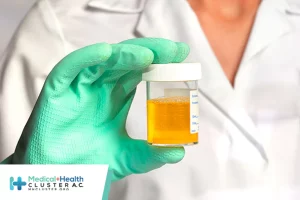CONDENA MH CLÚSTER ATAQUE ARMADO A HOSPITAL ARCÁNGELES
Leer más
Once Viewed as a Promising COVID-19 Treatment, Convalescent Plasma Falls Out of Favor

In the pandemic’s initial dark days, physicians and patients and their families were desperate for effective COVID-19 treatments. They didn’t yet have monoclonal antibodies or antiviral pills to lessen the ravages of the disease, so many turned to a therapy more than a century old.
At the very least, they figured, convalescent plasma, donated by people who’d recovered from COVID-19, couldn’t hurt, and the SARS-CoV-2 antibodies it was presumed to contain could enhance patients’ defenses against COVID-19.
“There was a preconceived notion of efficacy,” H. Clifford Lane, MD, deputy director for clinical research and special projects at the National Institute of Allergy and Infectious Diseases, said in a recent interview.
Three reports from Wuhan, China, published in 2020 in JAMA, the Proceedings of the National Academy of Sciences, and the Journal of Medical Virology, showed that patients’ viral load decreased and their symptoms improved following infusions of convalescent plasma. But the studies involved only a total of 21 patients; the authors of all 3 articles noted that clinical trials were needed to confirm the findings.
Nevertheless, while trials were being planned, US hospitals began infusing patients with COVID-19 with convalescent plasma through the US Food and Drug Administration’s (FDA’s) Expanded Access Program (EAP). Approximately 94 000 people hospitalized with COVID-19 in the US had received convalescent plasma infusions by August 2020, when the FDA ended the EAP and authorized the golden liquid for emergency use.
A December 2021 analysis of EAP data in PLOS Medicine demonstrated convalescent plasma’s safety in patients hospitalized with COVID-19—the incidence of serious adverse events was less than 1%. But because the study didn’t include a control or comparator group, “the data should not be used to infer definitive treatment effects,” the authors noted.
As other COVID-19 treatments became available, convalescent plasma’s early promise didn’t pan out in randomized clinical trials. “I don’t think convalescent plasma is a first-line therapy at this point,” Kevin Schulman, MD, a professor of medicine at the Stanford University School of Medicine who has studied the treatment, said in an interview.
Panic Instead of Science?
Convalescent plasma wasn’t associated with clinical benefit in a recent JAMA Network Open meta-analysis that pooled findings from 8 randomized clinical trials involving 2341 hospitalized patients breathing without the aid of mechanical ventilation, 1231 of whom received the treatment.
A UK trial published too recently to be considered for inclusion in the meta-analysis reached a similar conclusion. It randomized 11 558 hospitalized patients—5% of whom were receiving invasive mechanical ventilation upon randomization—to receive usual care plus convalescent plasma or only usual care. Researchers found that convalescent plasma did not improve survival or progression to ventilation.
In addition, a recently published multicenter placebo-controlled trial randomized 511 high-risk outpatients with COVID-19 who came to emergency departments within 7 days of symptom onset. The study found that convalescent plasma didn’t prevent disease progression.
“We’ve moved on,” said Schulman, a coauthor of the emergency department trial. “Convalescent plasma is a great thing to think about very early in a pandemic.”
Instead of providing an untested treatment to tens of thousands of patients in the EAP, multiple, large clinical trials could have been conducted, Schulman said. But, he added, a “huge amount of desperation” early in the pandemic “turned into panic, not into science.”
Large clinical trials, with 2500 patients apiece, could have answered questions that still remain, such as identifying the optimal dose and timing of convalescent plasma treatment and which patients are likely to benefit, Schulman said.
“You could easily argue we underdosed patients” in his trial, Schulman acknowledged. “Our trial was the best we could do at the time.”
All in the Timing?
Arturo Casadevall, MD, PhD, a leader of the National COVID-19 Convalescent Plasma Project, isn’t ready to abandon a treatment he’s championed since penning a Wall Street Journal op-ed about it in February 2020.
“In the spring of 2020, I really thought that convalescent plasma was a safety raft to new therapies that would be available in the fall,” Casadevall, chair of molecular microbiology and immunology at the Johns Hopkins Bloomberg School of Public Health, said in a recent interview.
Casadevall said he would have liked to conduct clinical trials with some of the patients enrolled in the EAP, but funding wasn’t available. Instead, he took a different approach to try to assess convalescent plasma’s efficacy: He tracked the number of convalescent plasma units that blood banking organizations dispensed to hospitals per admission and COVID-19 deaths in the fall of 2020. Casadevall and his collaborators found a strong inverse correlation between convalescent plasma use per COVID-19 hospital admission and deaths from the disease occurring 2 weeks after admission.
The problem with the randomized trials is that they didn’t treat patients soon enough to make a difference, Casadevall said.
Only trials in which patients receive convalescent plasma early in their infection could be expected to show a treatment benefit, he explained. By the time patients require hospitalization for COVID-19, the horse is already out of the barn. At that point, Casadevall said, inflammation is the problem, so anti–SARS-CoV-2 antibodies wouldn’t help slow disease progression. (Similarly, no anti–SARS-CoV-2 monoclonal antibody product has been authorized for patients with severe COVID-19.) The National COVID-19 Convalescent Plasma Project has posted critiques of Schulman’s study, the UK trial, and other research on its website.
Casadevall coauthored a recent multicenter trial that randomized 1225 outpatients whose COVID-19 symptoms had begun within 8 days before enrollment. The study, which hasn’t been peer-reviewed, found that early administration of high-titer SARS-CoV-2 convalescent plasma reduced hospitalizations over the next 28 days by 54% compared with control plasma from donors who had not had COVID-19.
“High titer convalescent plasma is an effective early outpatient COVID-19 treatment with advantages of low cost, wide availability, and rapid resilience to variant emergence from viral genetic drift in the face of a changing pandemic,” Casadevall and his coauthors concluded.
Limiting Its Use
Despite Casadevall’s favorable finding, recently updated guidelines from the World Health Organization (WHO), the FDA, and the Infectious Diseases Society of America (IDSA) recommend only limited use of convalescent plasma, if that.
On February 8, 2022, IDSA strongly recommended against using convalescent plasma in patients hospitalized with COVID-19. Among ambulatory patients with mild to moderate disease who are at high risk of progression to more serious symptoms and have no other treatment options, infusing high-titer COVID-19 convalescent plasma within 8 days of symptom onset is better than not infusing it, according to the guideline, which described this as a conditional recommendation with low certainty of evidence.
The FDA’s most recent revision of the Emergency Use Authorization (EUA) for COVID-19 convalescent plasma, published December 28, 2021, limits treatment with high-titer COVID-19 convalescent plasma to patients who have immunosuppressive disease or are receiving immunosuppressive treatment.
Randomized clinical trials and observational studies show that convalescent plasma is unlikely to be associated with clinical benefit in immunocompetent individuals with COVID-19, according to the FDA.
Interestingly, the WHO recommends against its use for patients who aren’t severely ill, calling the evidence for that position “certain.” Convalescent plasma should be used only within clinical trials for severe and critical patients with COVID-19, the WHO said in December 2021.
In a letter to the BMJ, Casadevall and coauthors urged the WHO to reconsider, saying that the organization “avoided digging below the surface to ask critical questions about treatment timing, study populations, and antibody titre” of the convalescent plasma in the trials it considered.
For now, demand for convalescent plasma is low because the clinical trial findings in hospitalized patients have persuaded many physicians that it won’t benefit any patients, Casadevall said. On top of that, he said, “Medicine has gotten used to working with therapies that are very well-defined. Plasma is a therapy where physicians are uncomfortable because every unit is different. To many people, that just doesn’t feel right.”
Lane is among those people. “It’s not a uniform product,” he noted. Assays suggested by the FDA measure only antibodies to the spike protein of 1 variant, so it’s difficult to know the true level and nature of antibodies in a unit of convalescent plasma, Lane said.
And it’s virtually impossible to judge a unit of plasma by its donor, Lane said. “Typically, the sicker you are, the better your antibodies.” Younger people also tend to generate more antibodies than older people, he added. However, “the immune response to SARS-CoV-2 is highly variable.”
Other COVID-19 treatments are standardized, so physicians can know exactly what they’re giving patients, Lane said. “If you have an at-risk ambulatory patient with symptoms, you can give them Paxlovid [nirmatrelvir and ritonavir, Pfizer’s antiviral pill], you can give them remdesivir. You can reduce their risk of being hospitalized 80% to 85%, and you know what you’ve given.”
Published Online: March 9, 2022. doi:10.1001/jama.2022.3214
Conflict of Interest Disclosures: Dr Schulman reports receiving personal fees from Novartis and from Frazier Healthcare Partners. Dr Casadevall reports that he is involved in convalescent plasma clinical trials at Johns Hopkins and serves on the scientific board of SAB Biotherapeutics, an antibody company.
Créditos: Comité científico Covid




